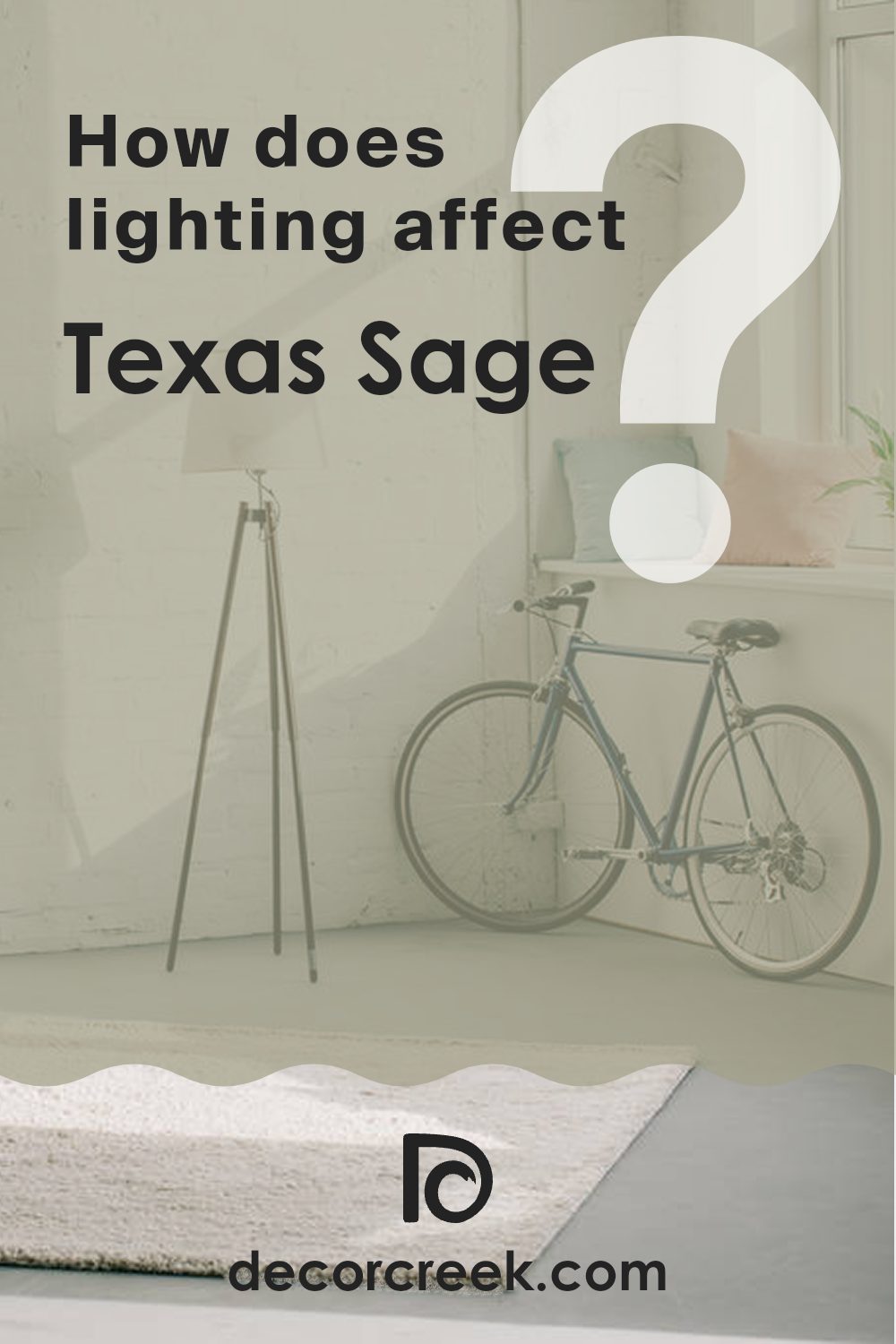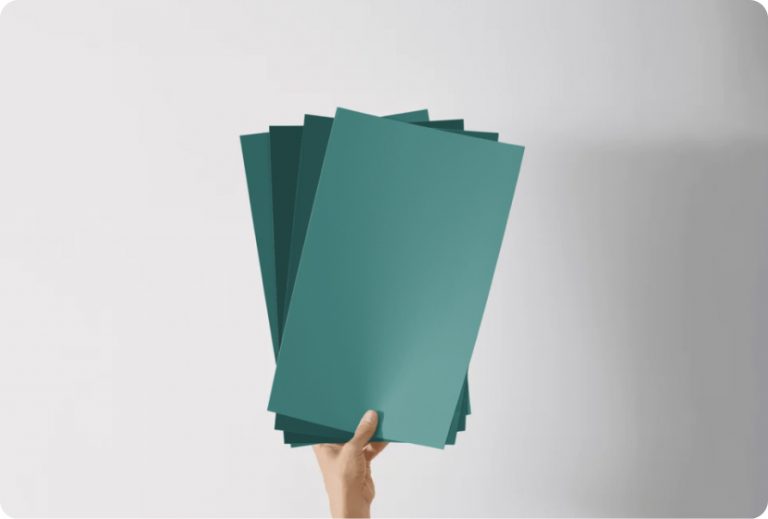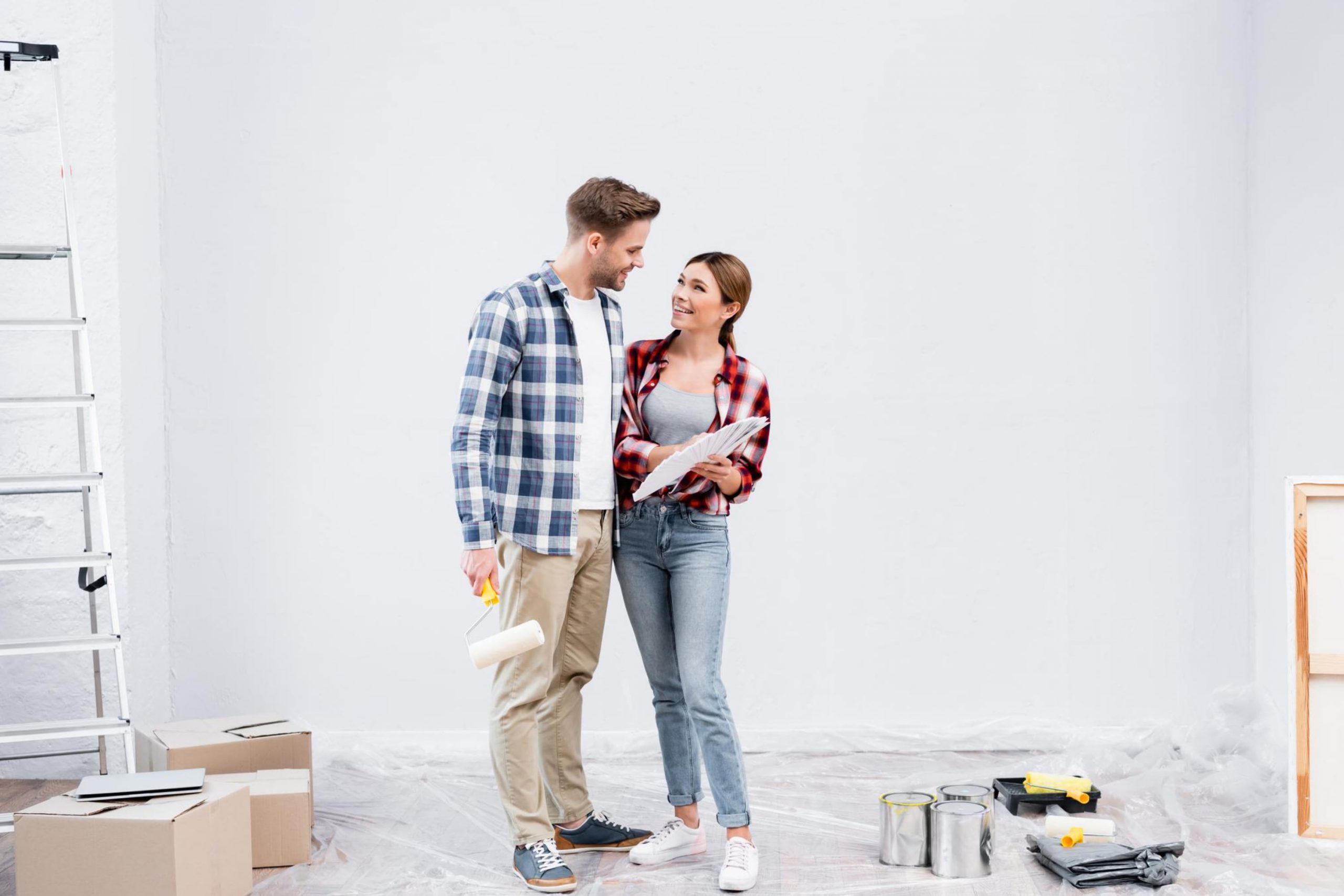When you’re on the hunt for the perfect paint color to refresh your room, stumbling upon just the right shade can feel like striking gold. That’s exactly how I felt when I came across 1503 Texas Sage by Benjamin Moore.
This unique hue has a soft, warm undertone that creates a cozy, inviting feeling in any area. Ideal for both lively living areas and calm bedrooms, Texas Sage offers a flexible backdrop that pairs beautifully with a wide array of decor styles.
Not only does this color breathe new life into your walls, but its subtle elegance also supports various accents and furnishings, helping to tie your decorative elements together seamlessly. Whether you’re interested in creating a standout wall or looking to renew the entire palette of your home, Texas Sage is a refreshing option that gently enhances the ambience without being too strong for the senses.
In this piece about my experience with 1503 Texas Sage, I’ll share how it complemented my own decor, various application tips I’ve picked up, and why it could potentially be just the color you’re searching for in your next home improvement project.
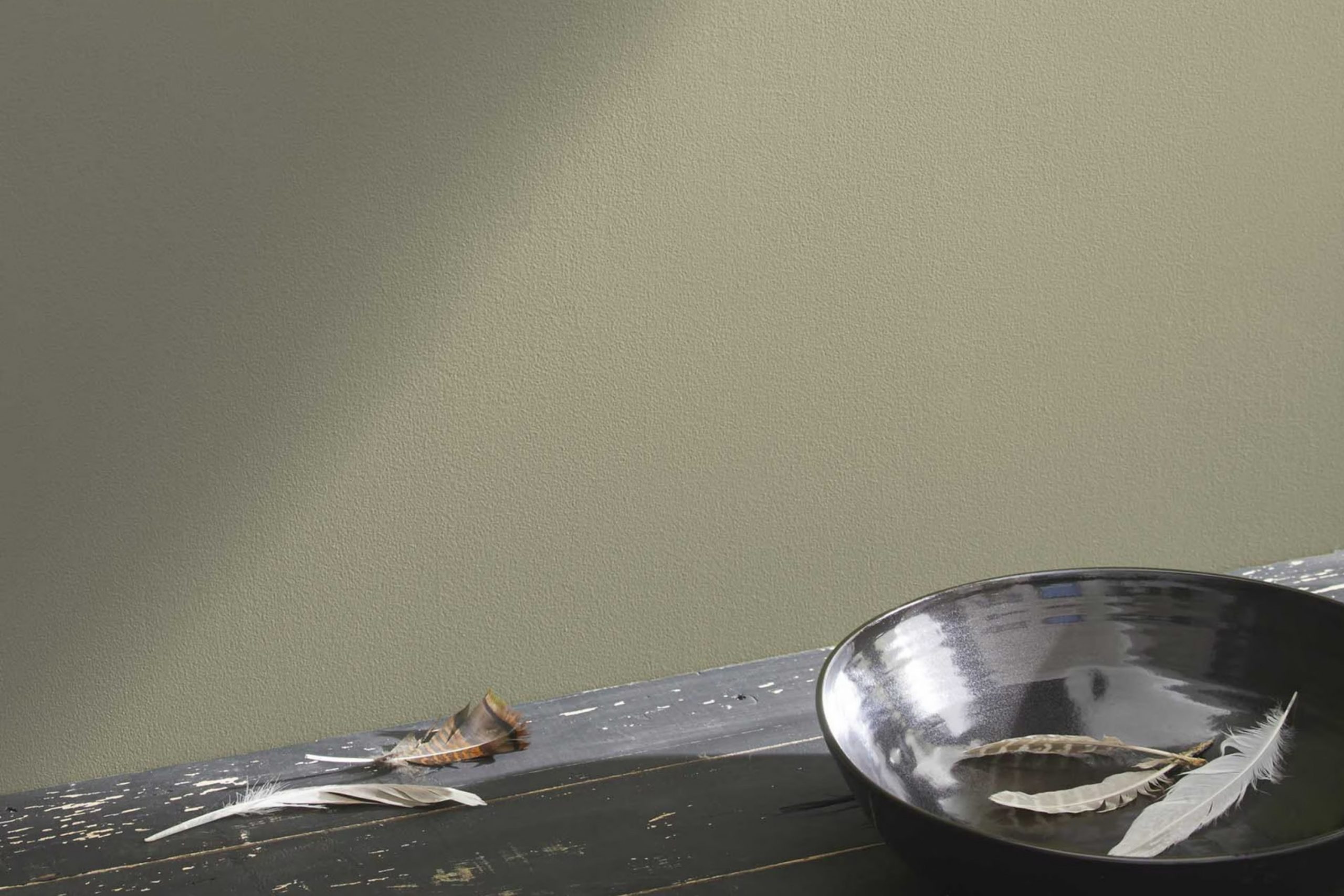
What Color Is Texas Sage 1503 by Benjamin Moore?
Texas Sage by Benjamin Moore is a unique and adaptable paint color that brings a subtle richness to any room. This color has a muted green hue with gray undertones, offering a soft and soothing mood that works well in numerous settings. This makes it an excellent choice for those looking to create a calm and understated environment.
The soothing nature of this shade pairs beautifully with natural materials such as wood, linen, and leather, adding a touch of warmth to the overall decor. It’s also compatible with metal finishes like brushed nickel or copper, which can give a more modern twist to the interior.
Texas Sage is incredibly flexible in terms of interior styles. It’s ideal for themes such as rustic, where its earthy tones harmonize with natural elements, or modern minimalist designs, where its subtlety provides a clean and airy feel. In Scandinavian styled homes, it enhances the light yet cozy aesthetic that this style is known for.
For those who prefer a more traditional vibe, Texas Sage works well with classic furniture pieces and detailed textures, providing a background that both complements and highlights heritage elements without being too strong.
This color promotes a feeling of calm and comfort and is perfect for living rooms, bedrooms, and home offices where a relaxing mood is key. Whether you’re looking to create a stylish backdrop or a focal point, Texas Sage offers both flexibility and charm.
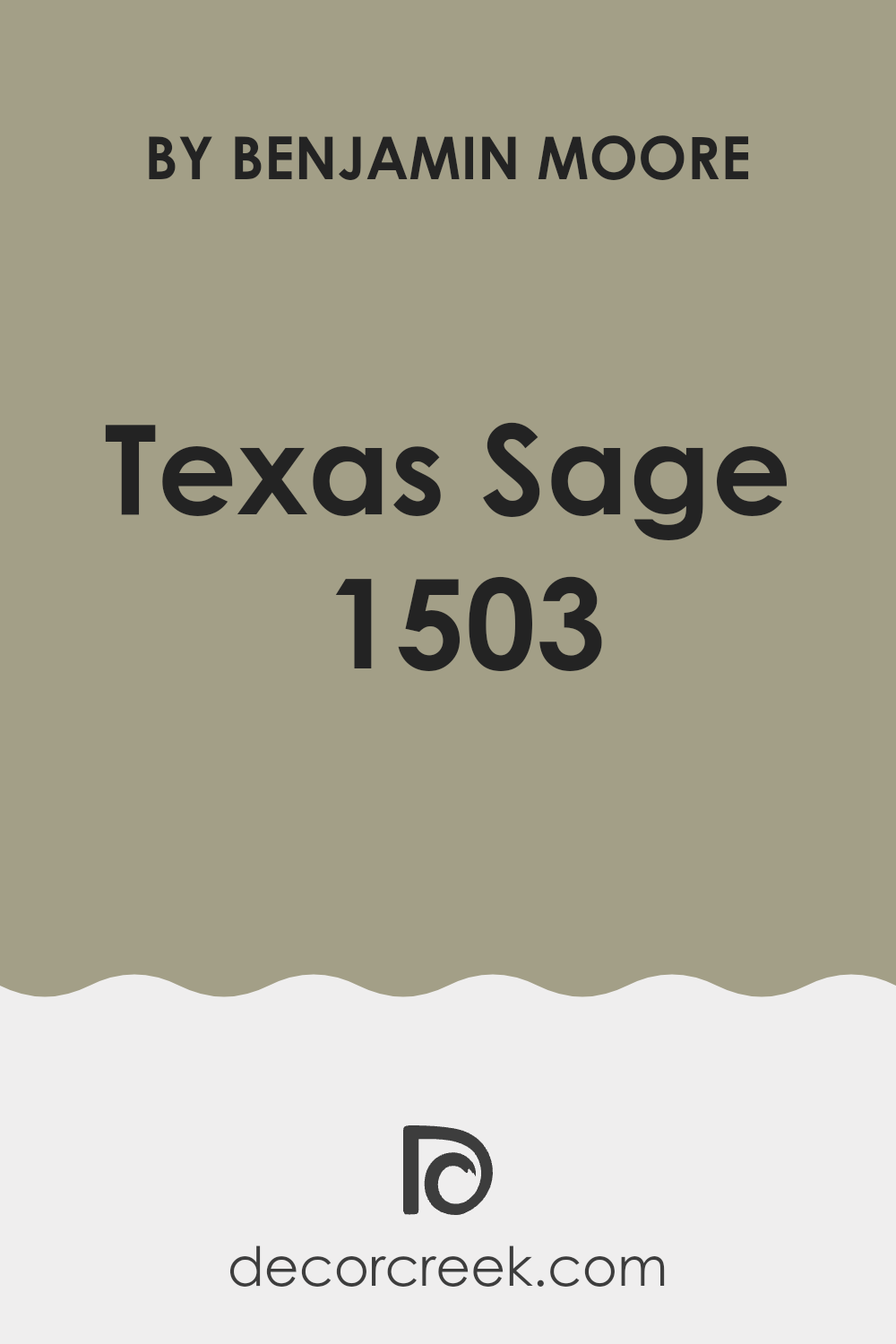
Is Texas Sage 1503 by Benjamin Moore Warm or Cool color?
Texas Sage 1503 by Benjamin Moore is a flexible paint color that is popular in many homes. It’s a soft, muted gray with hints of green, making it a perfect neutral choice for those looking to add a gentle splash of color to their rooms without being too strong for the area.
This shade pairs well with both bright colors and darker hues, offering adaptability in home decor. Its subtle green undertone brings a touch of nature indoors, making it especially fitting for rooms that could use a calm and relaxed feeling, like bedrooms or home offices.
Additionally, Texas Sage is great for rooms with a lot of natural light, as the light changes the color’s appearance throughout the day, adding dynamic interest to the area. Its flexibility also extends to various styles, from modern to rustic, making it a handy shade for those updating their interiors.
Undertones of Texas Sage 1503 by Benjamin Moore
Texas Sage 1503 by Benjamin Moore is a unique color with a complex mix of undertones that can greatly influence how it appears in different settings. Undertones are subtle shades that lie beneath the surface of the main color, and they can show through depending on the lighting and surrounding tones. This particular shade includes a variety of undertones such as pale pink, mint, pale yellow, and lilac, which lend a soft and subtle diversity to the primary hue.
When used on interior walls, the various undertones of Texas Sage 1503 can have a strong impact on the mood and feel of a room. For example, the pale pink and lilac undertones might give a warmer tone in sunlight, creating a soft and welcoming feeling. Meanwhile, the cooler undertones like light blue and mint could help make a room feel more open and airy under certain lighting conditions.
The presence of darker undertones like olive, brown, and dark grey adds depth and complexity, allowing the color to adapt beautifully in rooms with natural light variations throughout the day. As light shifts and fades, these undertones help maintain a sense of balance and flow, avoiding the stark contrasts that sometimes occur with simpler colors.
Ultimately, the array of undertones in Texas Sage 1503 means it can work well in many different types of rooms, from bedrooms to living areas, providing flexibility in design and decor options. It pairs nicely with a wide range of styles and complements, enhancing the overall aesthetic of any room. Whether aiming for a calm, refreshing look or a more lively vibe, the undertones play a vital role in achieving the desired effect.
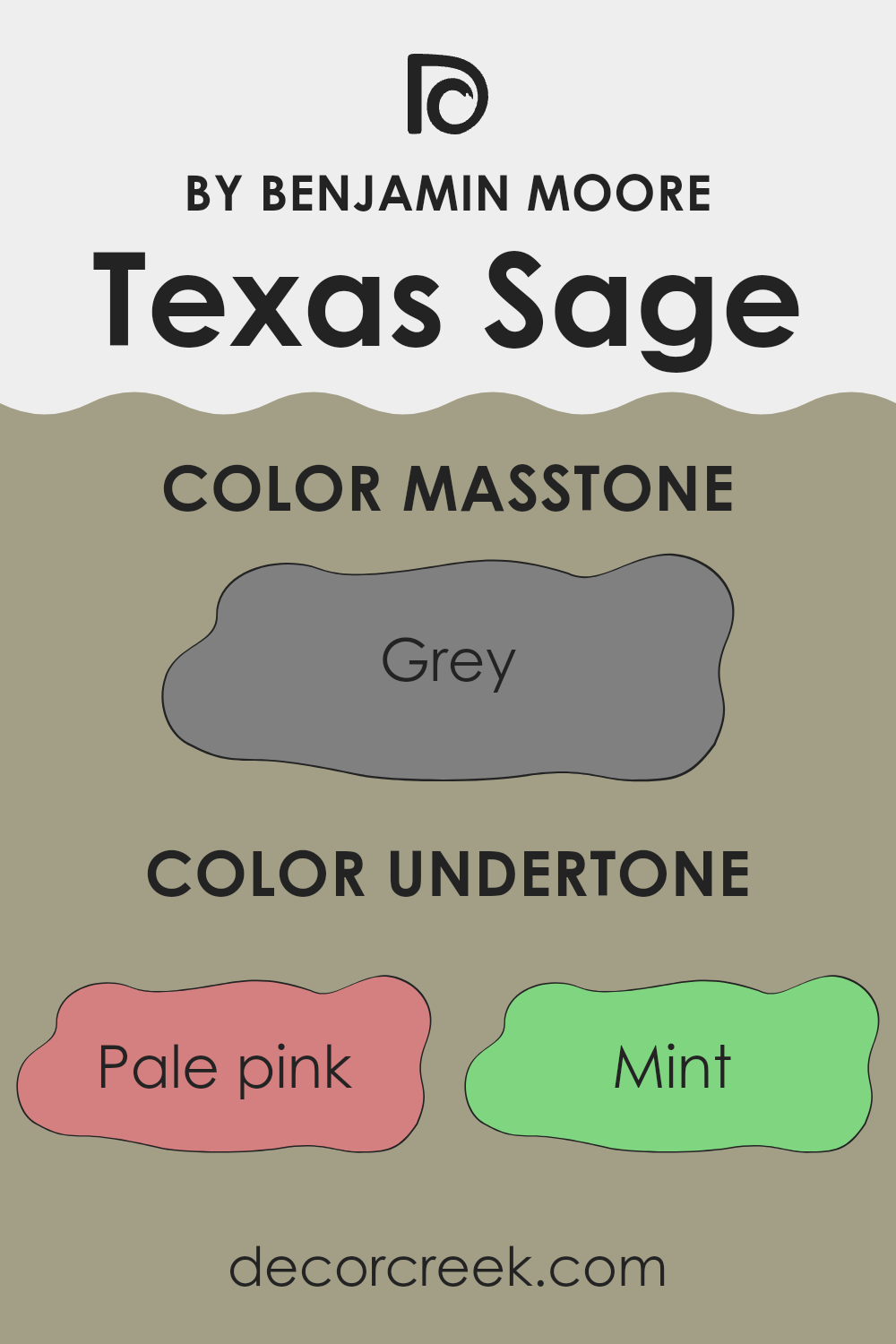
What is the Masstone of the Texas Sage 1503 by Benjamin Moore?
Texas Sage 1503 by Benjamin Moore has a masstone of grey, which brings a neutral and calming effect to any home. This grey color can work beautifully in various rooms, thanks to its adaptability in matching with other shades. It is practical for living rooms or bedrooms because it doesn’t overpower the senses, making it easy to decorate around with any style or accent tones.
Since this grey shade is neither too dark nor too light, it balances well with both bright and soft lighting. This makes it an ideal choice for rooms that get a lot of sunlight, as it won’t fade into the background, nor will it dominate the area.
Its neutrality also means that it pairs nicely with a wide range of furniture and decor, from modern metallic tones to more rustic wood finishes, enhancing the overall look without demanding attention. Therefore, using Texas Sage 1503 can help create a comfortable and welcoming feeling in any home.
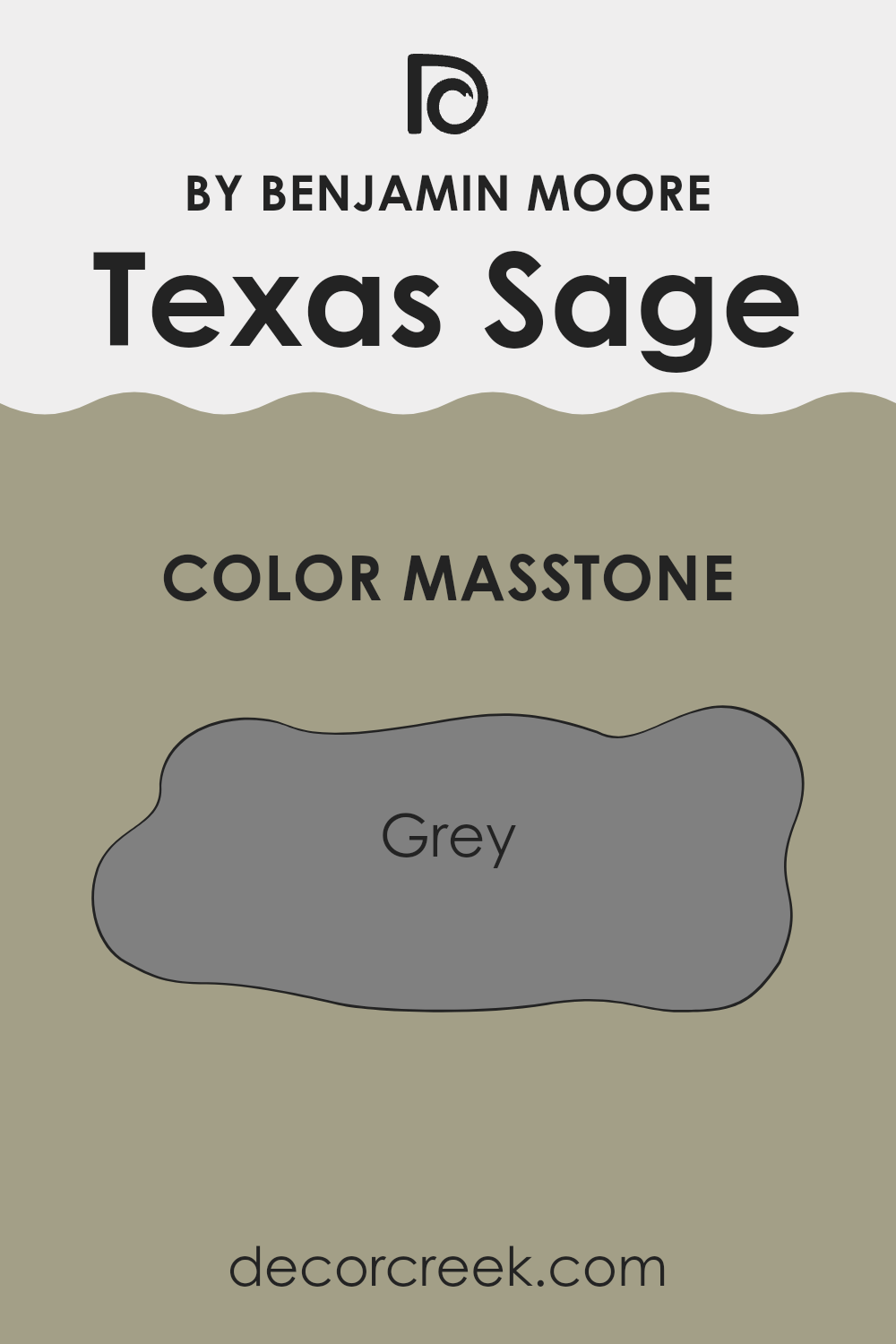
How Does Lighting Affect Texas Sage 1503 by Benjamin Moore?
Lighting plays a critical role in how we see colors in different environments, shaping mood, aesthetics, and function. The color in question, a Benjamin Moore shade, changes noticeably under various lighting
Artificial light can differ greatly, ranging from warm yellow tones to cool white fluorescents. Under warm artificial light, the grayish tones of this color become more visible, creating a cozy and gentle feeling that softens the hue. In contrast, under cool fluorescent light, the color appears slightly sharper and clearer, which can make the room feel more awake and open.
Natural light, which shifts with the time of day and weather, also influences how we see colors. Under direct sunlight, the color can appear much brighter and more lively, showing more of its blue and green undertones.
Room Direction and Color Appearance:
The direction of a room in relation to the sun’s path plays a big part in how this color looks:
- North-facing rooms: These get less direct sunlight, resulting in cooler, softer light throughout the day. The color may look more muted and slightly darker, highlighting its cooler tones and giving the room a calm, steady feeling.
- South-facing rooms: These receive strong sunlight most of the day, filling the area with warm, bright light. This can make the color seem lighter and more vivid, enhancing its lively features and making the room feel more welcoming.
- East-facing rooms: They get strong morning light, which makes the color look bright and cheerful early on but softer and cooler as the day goes on. This shifting quality can add a sense of movement to the area.
West-facing rooms: These get evening sunlight, so the color may seem soft and calm in the morning and warmer and more glowing later in the day. The changing light adds a touch of warmth and ease in the afternoon and evening.
Overall, the appearance of this color depends deeply on both the type and direction of light, shaping the atmosphere and style of any room.
decorcreek.com
What is the LRV of Texas Sage 1503 by Benjamin Moore?
LRV stands for Light Reflectance Value, which measures how much light a paint color reflects or absorbs when it’s applied to a surface. It’s expressed as a percentage, and the higher the value, the more light the color reflects.
This is an important factor to keep in mind when selecting paint shades because it can strongly affect the feeling and brightness of a room. For example, higher LRV colors can make a room feel more open and brighter, while lower LRV colors can make it feel cozier and a bit dimmer.
With an LRV of 34.21, Texas Sage by Benjamin Moore sits on the lower end of the scale, meaning it absorbs more light than it reflects. This quality makes it a great choice for creating a more intimate and comforting mood in a room.
It’s especially fitting for larger areas or rooms with plenty of natural light where you don’t want the color to feel too strong. In rooms with less natural light, this color could make the area seem a bit darker, so it’s best to balance it with good interior lighting and lighter decor to offset the deeper tone.
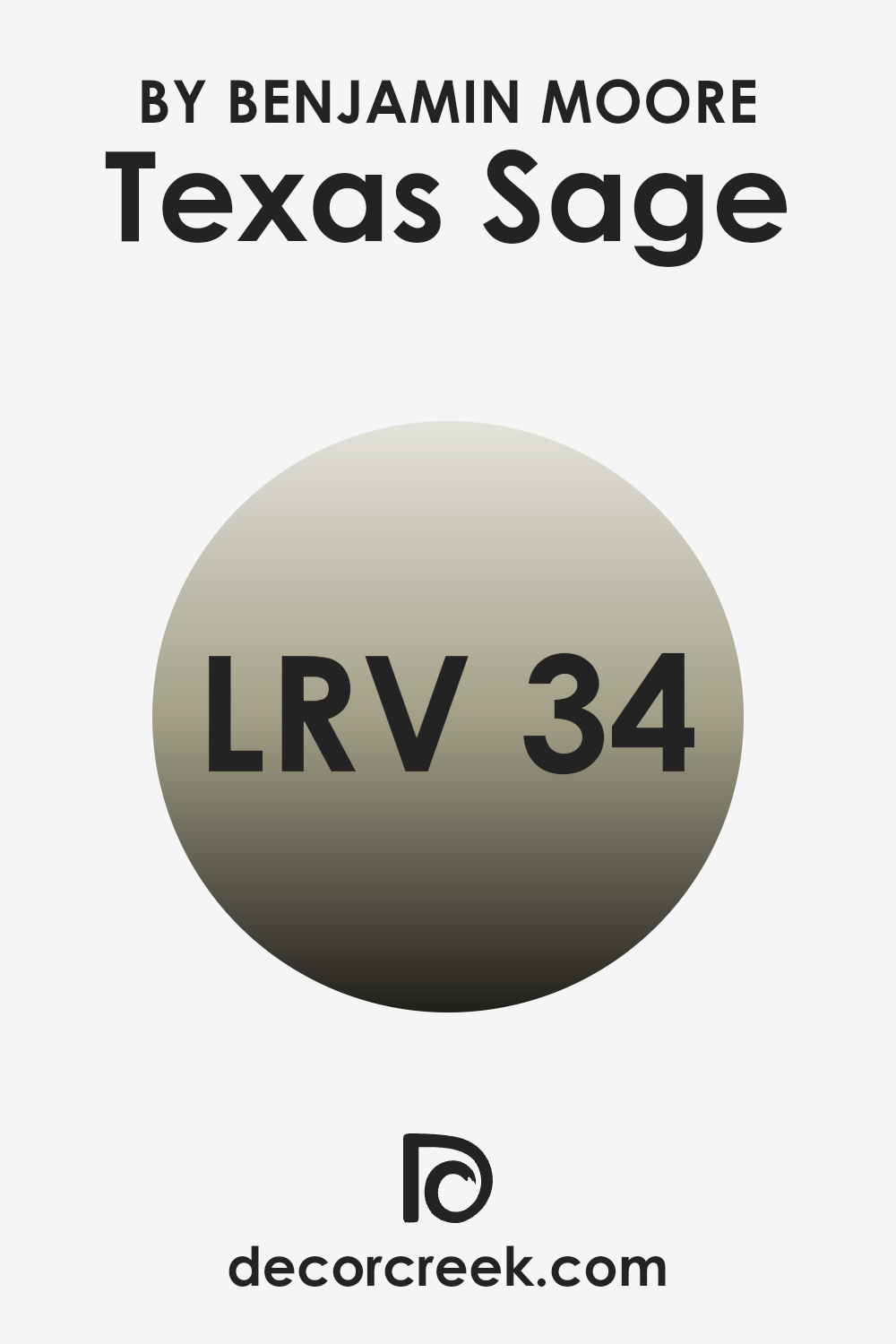
Coordinating Colors of Texas Sage 1503 by Benjamin Moore
Coordinating colors are a group of shades that complement each other and work well together in a design scheme. When selecting coordinating colors, such as those suggested for Texas Sage by Benjamin Moore, the aim is to achieve balance and harmony within a room.
These colors typically enhance the main hue without overpowering it, guiding the aesthetic flow from room to room or on a single conceptual level. For instance, Texas Sage, a subtle and stylish gray-green, pairs beautifully with its coordinating colors to provide flexibility and a cohesive look across various applications, from walls to accents.
Among the coordinated options for Texas Sage, we find Vintage Wine, a rich and deep red that offers a striking contrast and a sense of warmth. This color provides a strong backdrop or a bold complement to the softer main shade. Glacier White, another coordinating color, is a very pale, almost neutral white that offers a crisp and clean look, acting as a refreshing counterbalance.
Kensington Blue adds a distinct touch with its deep, polished blue, playing into a classic yet bold aesthetic that nicely frames Texas Sage. Lastly, China White provides a slightly warmer tone compared to Glacier White, adding subtle depth and warmth without being too strong for the main hue, ensuring elegance and a broadly appealing visual harmony.
You can see recommended paint colors below:
- 2116-20 Vintage Wine
- OC-37 Glacier White
- 840 Kensington Blue
- OC-141 China White
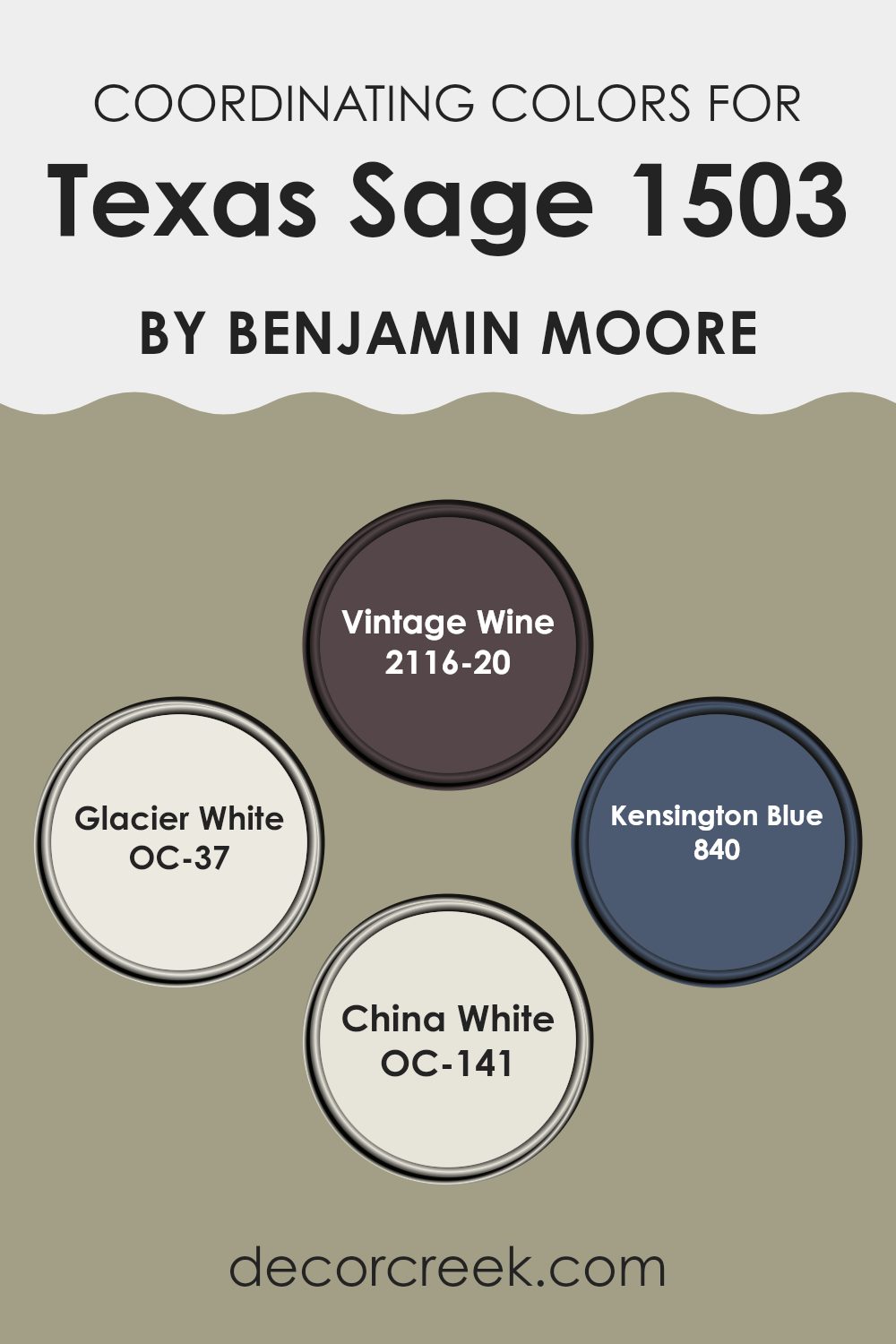
What are the Trim colors of Texas Sage 1503 by Benjamin Moore?
Trim colors are carefully chosen paint shades applied to the moldings, door frames, window frames, and other architectural features of a room. They are important because they highlight and define the boundaries and lines of a room, enhancing the room’s overall look.
A contrasting trim color helps in drawing attention to the architectural details and can also serve to frame different wall shades, adding depth and distinction to the area. For example, OC-121 Mountain Peak White is a clean and crisp white color that can help make the Texas Sage walls stand out by defining the room clearly and neatly.
It adds brightness to the room, making it feel more open and light. On the other hand, OC-145 Atrium White offers a slightly warmer tone that blends beautifully with softer wall colors. This shade can add a gentle warmth to rooms, creating a welcoming and comforting feeling, particularly effective in living areas where coziness is key.
You can see recommended paint colors below:
- OC-121 Mountain Peak White
- OC-145 Atrium White
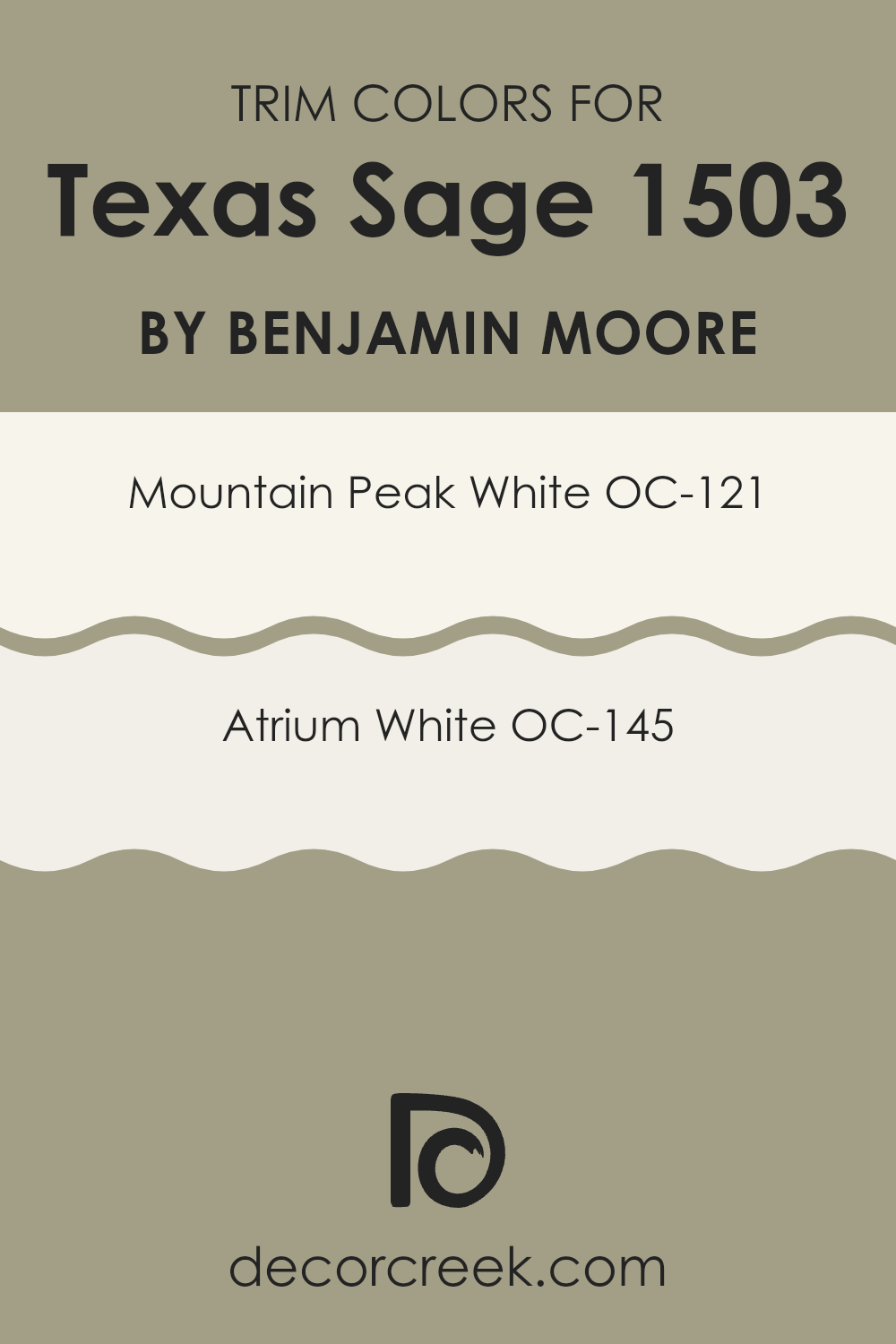
Colors Similar to Texas Sage 1503 by Benjamin Moore
Similar colors play a crucial role in design by creating a sense of harmony and balance. When colors like Texas Sage 1503 by Benjamin Moore and its kin such as 509 – Cypress Green, HC-113 – Louisburg Green, 2142-40 – Dry Sage, and 1531 – Victorian Garden are used together, they unite the visual experience, providing a consistent and coherent look.
This continuity is essential, especially in rooms where the aim is a smooth and seamless aesthetic flow. Whether you’re painting walls or choosing furnishings, using closely related hues can ensure that each element complements the others, enhancing the overall feeling without being too strong for the senses.
For instance, Cypress Green offers a deep, refreshing touch that echoes the richness of a forest, making it perfect for rooms aiming for a nature-inspired vibe. Louisburg Green has a slightly more robust, earthy quality that grounds a room’s look, adding depth and warmth.
Dry Sage brings a lighter, airier mood, excellent for creating a soothing and welcoming feeling. Lastly, Victorian Garden is a gentle nod to traditional beauty, with a dusky tone that works well in creating an elegant yet subtle backdrop. Together, these colors can provide a flexible palette that allows for creative freedom while maintaining a cohesive look.
You can see recommended paint colors below:
- 509 Cypress Green
- HC-113 Louisburg Green
- 2142-40 Dry Sage
- 1531 Victorian Garden
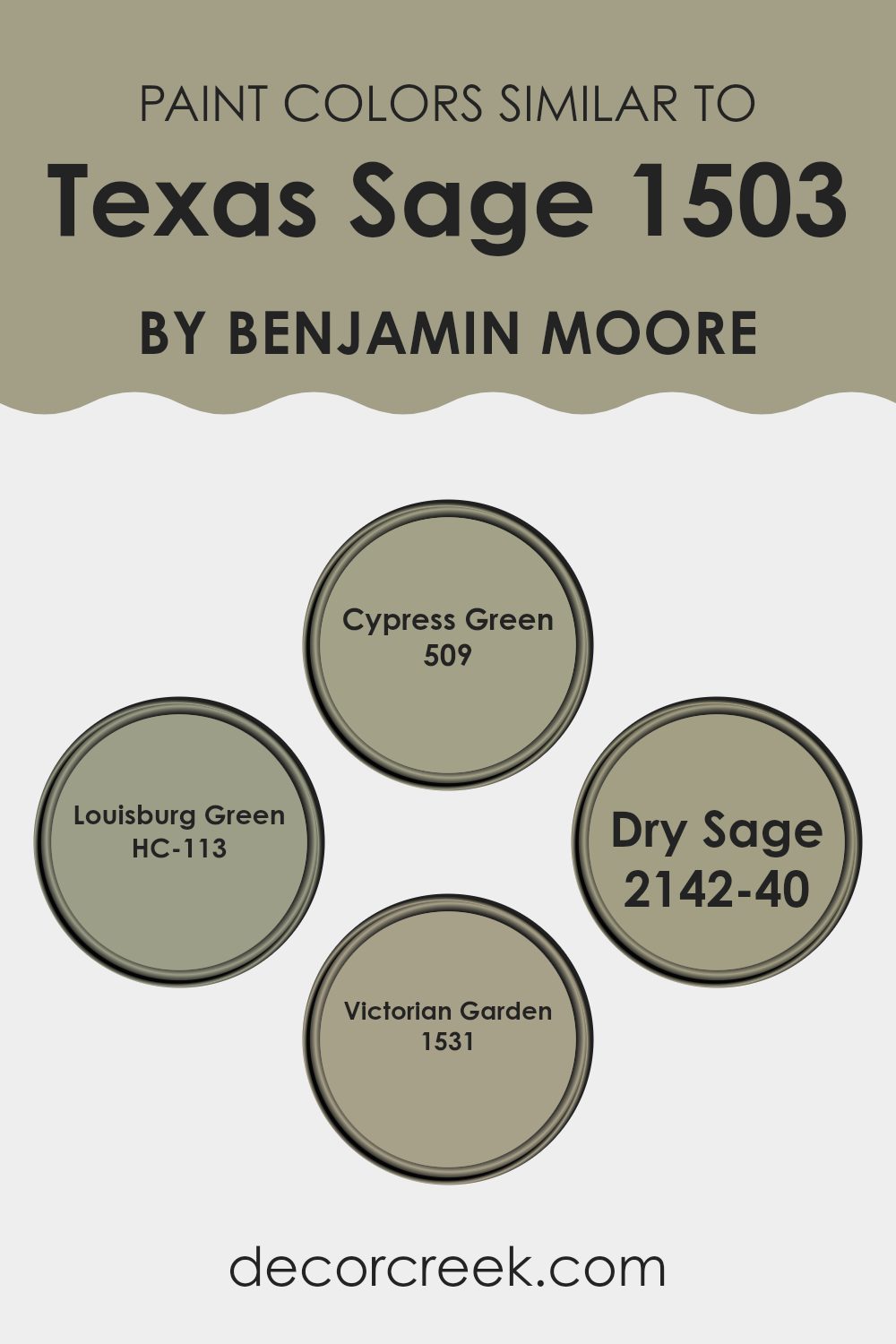
Colors that Go With Texas Sage 1503 by Benjamin Moore
Colors that pair well with Texas Sage 1503 by Benjamin Moore hold great value in interior design because they help create a balanced and harmonious room. These complementing shades, including Cheyenne Green, Passion Vine, Trailing Vines, Sweet Spring, Paris Rain, and White River, work together by balancing warmth and coolness or adding depth to an aesthetic. Choosing the right tones around a central hue like Texas Sage ensures that the feeling in a room is balanced and pleasing to the eye.
Cheyenne Green is a deep, muted green with an earthy feel, ideal for those wanting a touch of nature indoors. Passion Vine offers a richer, more lively green, adding energy and freshness to any room. Trailing Vines is slightly lighter and softer, perfect for adding subtle color without being too strong for a room.
Sweet Spring is a gentle, airy green that brings a sense of freshness and light. Paris Rain is a unique blend of blue and green, providing a calming yet energizing effect that reflects the calm rhythm of a rainy day. Lastly, White River is a clean, crisp white that helps other colors stand out and gives a sense of openness. Together, these shades complement Texas Sage in creating a cohesive and inviting setting.
You can see recommended paint colors below:
- 1502 Cheyenne Green
- 1504 Passion Vine
- 1505 Trailing Vines
- 1500 Sweet Spring
- 1501 Paris Rain
- 1499 White River
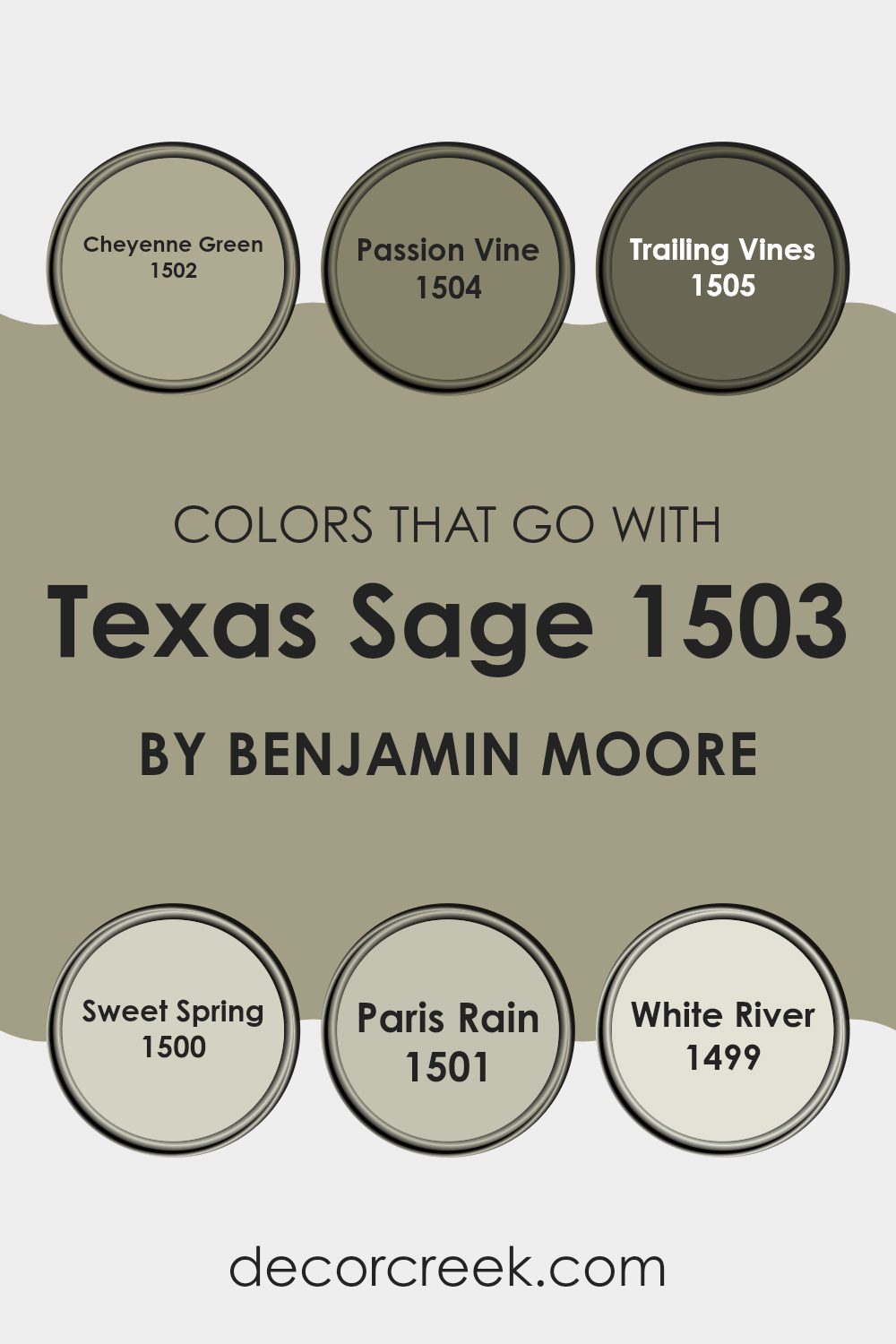
How to Use Texas Sage 1503 by Benjamin Moore In Your Home?
Texas Sage 1503 by Benjamin Moore is a beautiful, muted green-gray paint color that can add a cozy and calming feeling to any room in your home. It’s perfect for creating a relaxed vibe in areas like the living room, where you want to wind down and enjoy family time.
This shade also works well in bedrooms due to its soft, soothing quality, helping you feel calm as you unwind at the end of the day. In addition to walls, Texas Sage can be used on cabinetry or furniture to refresh your interior without being too strong with bold colors.
It pairs nicely with a wide range of tones, from warm browns to cool blues, making it a flexible choice for incorporating into various design styles. Whether you’re painting an entire room or just an accent wall, Texas Sage offers a gentle touch of color that’s easy on the eyes and perfect for a relaxing home mood.
Texas Sage 1503 by Benjamin Moore vs Louisburg Green HC-113 by Benjamin Moore
Texas Sage by Benjamin Moore is a muted green with gray undertones, giving it a soft and calming mood. Its subtlety makes it flexible for various rooms, blending well with natural materials and light woods.
On the other hand, Louisburg Green by Benjamin Moore has a deeper, more classic green hue with a hint of earthiness. This color feels richer and is ideal for creating a cozy, welcoming feeling in a room.
While Texas Sage works well in a modern or minimalist decor, Louisburg Green is perfect for more traditional settings or as an accent in a room that calls for a bit more warmth. Both colors offer a fresh, natural vibe but in distinct ways, with Texas Sage leaning toward a lighter, airier tone and Louisburg Green offering a deeper, embracing character.
You can see recommended paint color below:
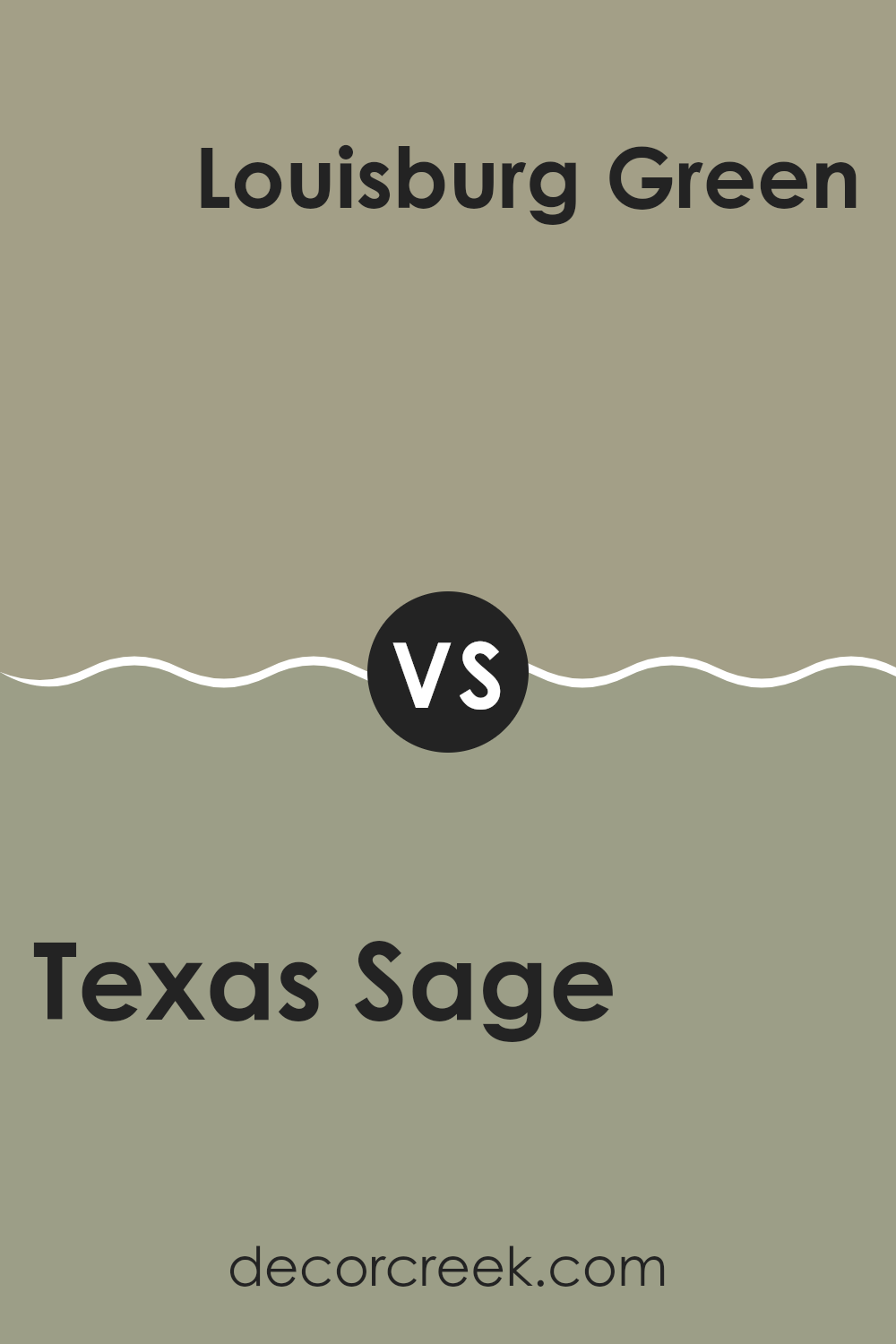
Texas Sage 1503 by Benjamin Moore vs Victorian Garden 1531 by Benjamin Moore
Texas Sage and Victorian Garden are both beautiful colors from Benjamin Moore, but they have distinct differences in their tones and moods. Texas Sage is a subtle, muted green with gray undertones, giving it a calm and soothing feeling, perfect for creating a relaxed environment. It’s great for rooms where you want to wind down and rest, like bedrooms or living rooms.
On the other hand, Victorian Garden has a more vivid character, being a gentle but richer shade of lavender with hints of gray. This color adds a touch of gentle warmth to any room, making it ideal for areas where a soft, cozy feeling is desired.
While both shades can enhance different parts of a home with their unique qualities, Texas Sage leans toward a more understated, neutral palette, whereas Victorian Garden brings a slightly more lively and warm energy to a room. Choosing between them depends on what kind of mood or style you want to create in your room.
You can see recommended paint color below:
- 1531 Victorian Garden
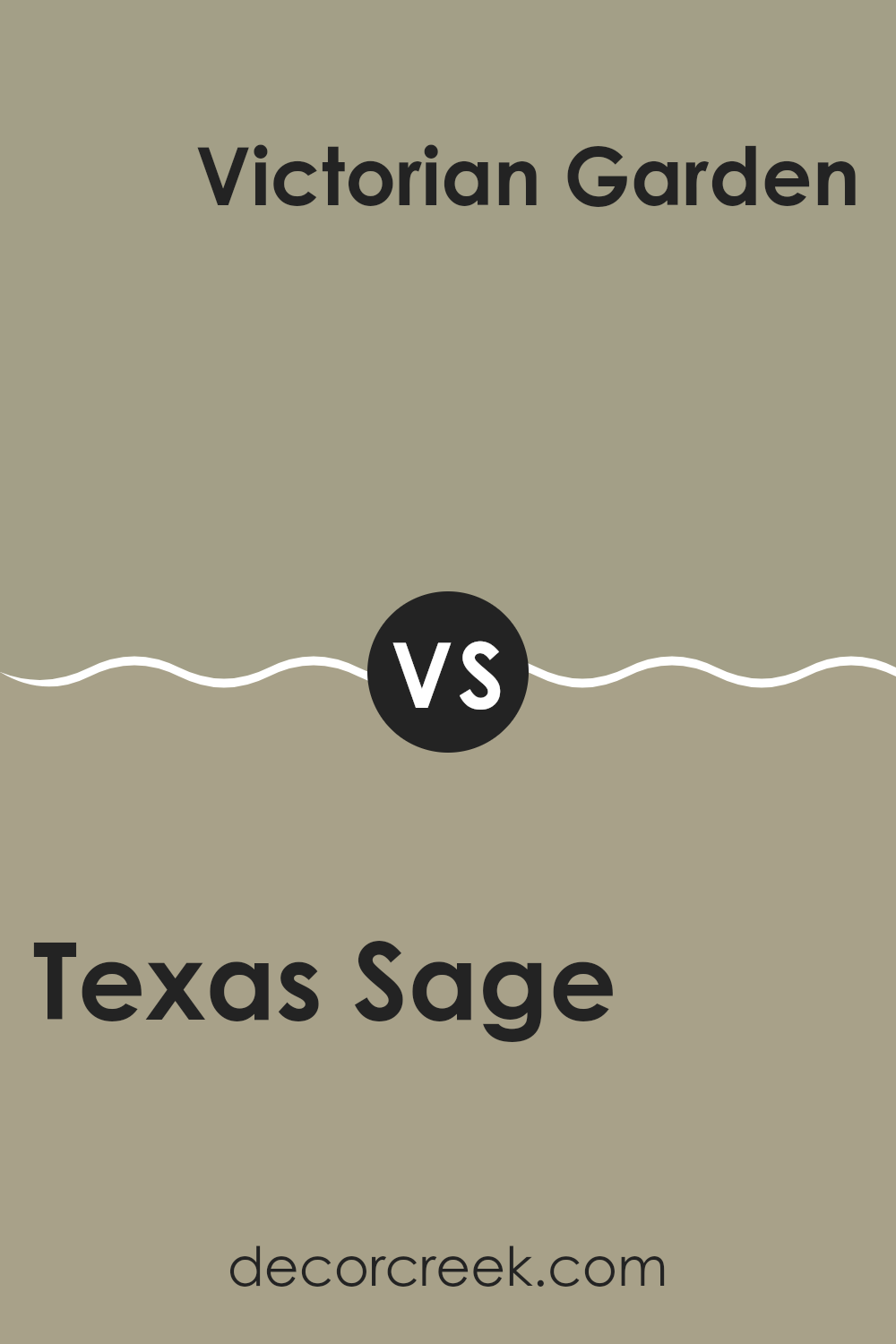
Texas Sage 1503 by Benjamin Moore vs Dry Sage 2142-40 by Benjamin Moore
Texas Sage and Dry Sage are two distinct paint colors from Benjamin Moore, each bringing a unique mood to the rooms they enhance. Texas Sage has a deeper, gray-green tone that brings a sense of grounding and calm to any room. This color works well in areas that aim for a more muted yet welcoming atmosphere, such as living rooms or bedrooms.
On the other hand, Dry Sage is lighter and leans more toward an earthy green with soft gray undertones. This shade is excellent for creating a fresh and open feeling, making it ideal for smaller rooms or those with less natural light, helping them feel brighter and more open.
While both shades share green and gray elements, Texas Sage offers a darker, more grounded tone compared to the lighter and gentler presence of Dry Sage. Choosing between them depends on the desired mood and the unique qualities of the room you’re decorating.
You can see recommended paint color below:
- 2142-40 Dry Sage
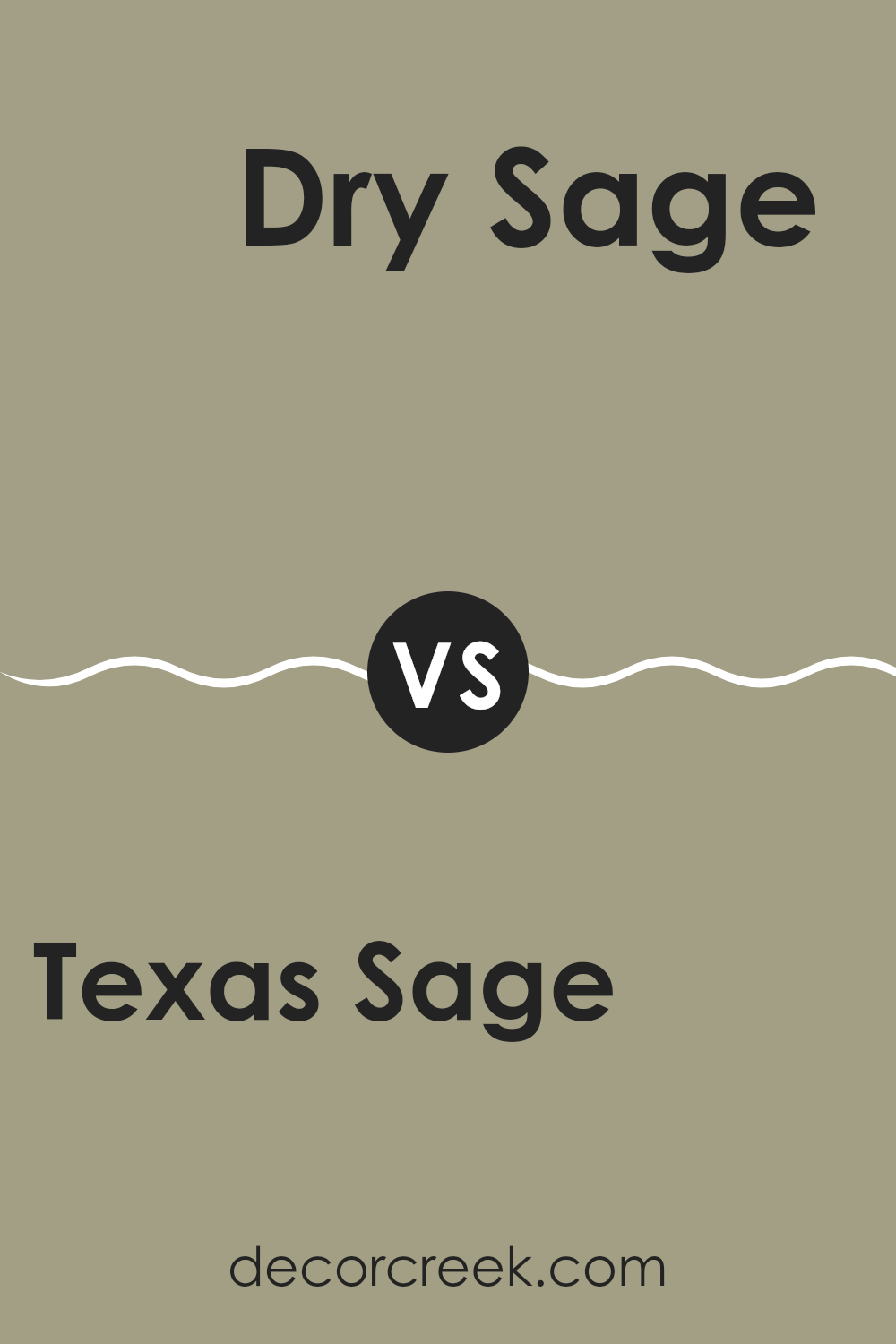
Texas Sage 1503 by Benjamin Moore vs Cypress Green 509 by Benjamin Moore
Texas Sage and Cypress Green are two shades from Benjamin Moore that bring their own unique character to rooms. Texas Sage is a subtle gray with a hint of green, creating a muted and calm mood. This color works well in areas meant for relaxation and can make smaller rooms feel more open.
On the other hand, Cypress Green is a deeper, richer green that gives a strong presence to any room it’s used in. This shade is ideal for creating a cozy, welcoming feeling, as it brings a nature-inspired touch to the interiors.
While Texas Sage provides a gentle background, allowing for a wide range of decor choices, Cypress Green requires a bit more attention in coordination and accents because of its stronger tone. Both shades offer distinct moods: Texas Sage is more understated and adaptable, while Cypress Green stands out and defines a room. When choosing between them, consider the feeling you want to create and how much color you wish to include in your decor scheme.
You can see recommended paint color below:
- 509 Cypress Green
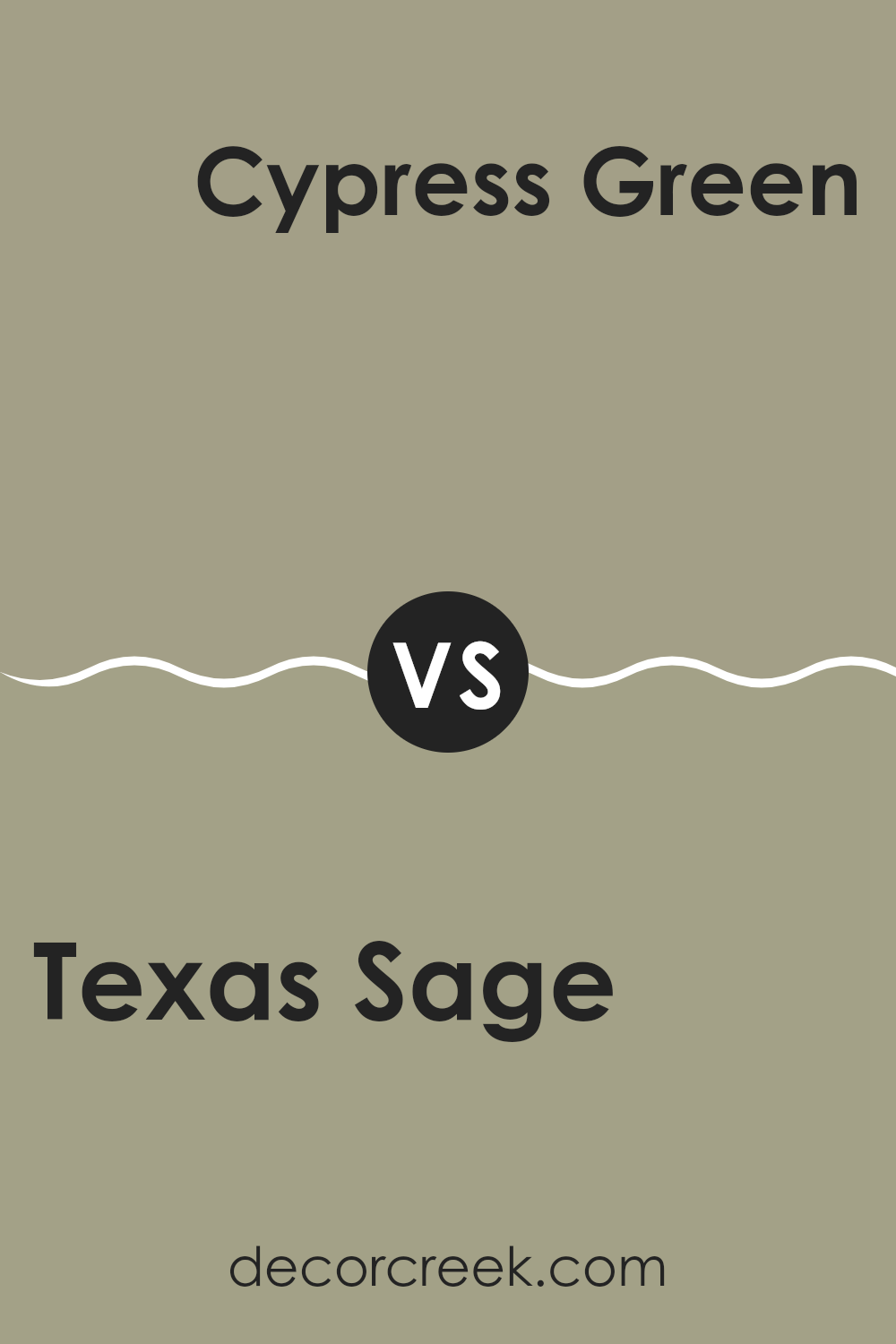
In closing my thoughts on Benjamin Moore’s 1503 Texas Sage paint, I must say it impressed me with how warm and welcoming it makes a room feel. This color, being a soft gray with hints of green, gives off a cozy and natural vibe, making it perfect for anyone wanting to add a touch of nature to their home. I found it particularly calming in bedrooms and living rooms, where we spend a lot of our quiet time. It fits beautifully with many color schemes, blending in rather than competing for attention.
I also appreciate how Texas Sage stands out from other shades by being understated yet full of character—like a quiet friend who always knows how to lift your spirits. And just like a favorite outfit that feels both comfortable and flattering, this paint is dependable and simple to work with, offering excellent coverage that easily hides wall flaws.
To sum up, Benjamin Moore’s 1503 Texas Sage is truly a gem. It adapts well to all kinds of interiors, making rooms look fresh and polished without much effort. Whether you’re refreshing a single room or updating your entire home, I highly recommend this shade for its beautiful balance and calming energy. It made my decorating project both enjoyable and rewarding.
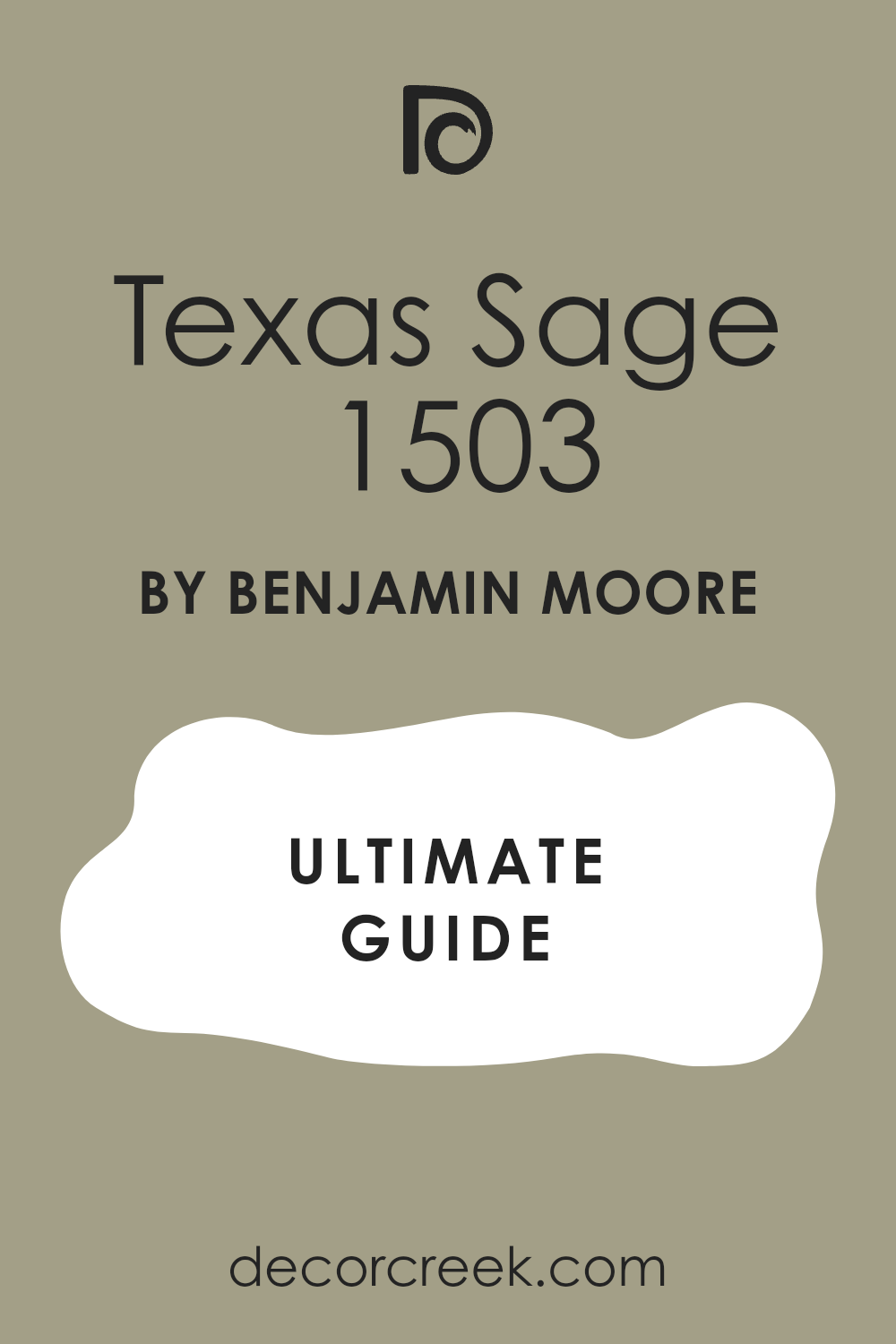
Ever wished paint sampling was as easy as sticking a sticker? Guess what? Now it is! Discover Samplize's unique Peel & Stick samples.
Get paint samples
